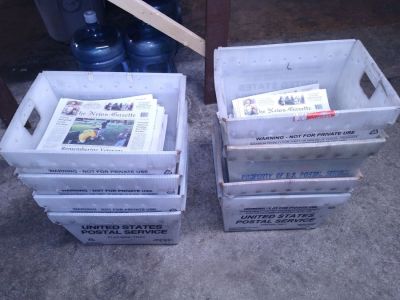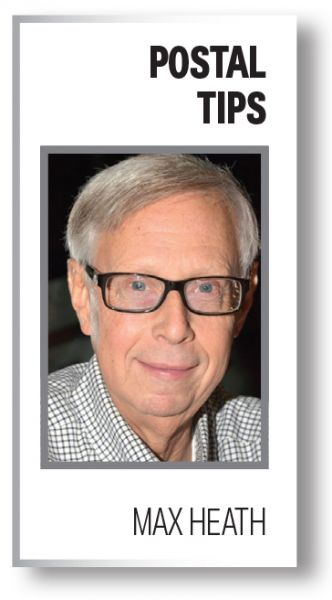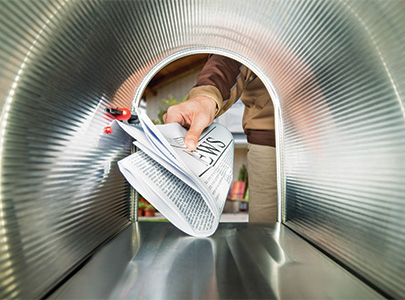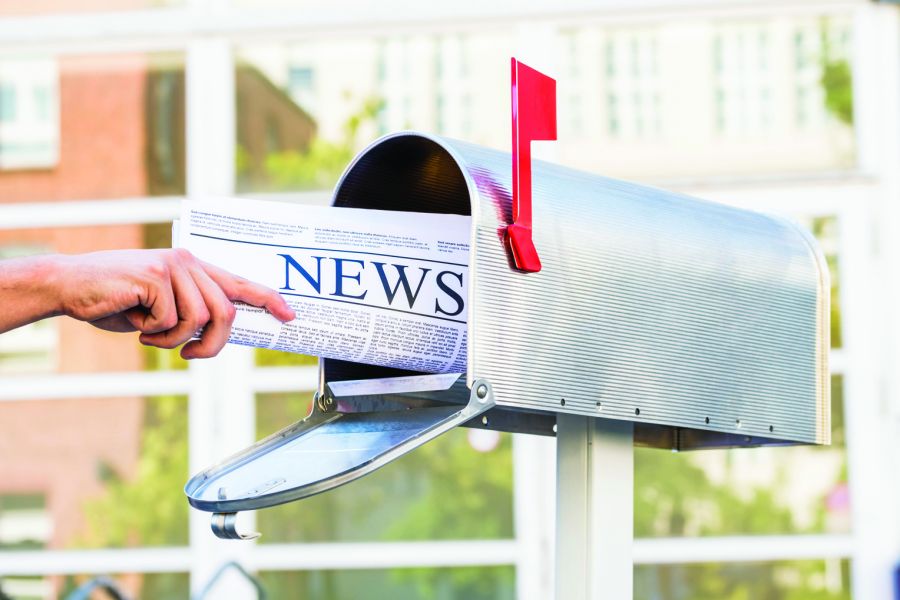Must-do list for printing/mailing plants
Max Heath
May 1, 2021


NNA has worked with member mailing and delivery issues for many years now. We’ve noticed some common problems that often stem from printing plants and mailing facilities that prepare the mail for their printing customers, often providing the presort software for the newspaper’s subscriber list. I am sharing some things that you can share with your central printer. If you are a central printer/mailer, please heed these words.
1. Use PAVE-certified software. Whether you are presorting the mail for your customers or they operate their own, ensure that your customers have address files or labels created from such software. The time is long past that newspapers can “get by” with using a simple list program like Filemaker and figure out how to properly sort, bundle and containerize newspaper mail.
Sometimes newspapers sort the mail according to instructions provided by some postal person years ago. Many changes in rates, plant destinations, sortation rules and discounts have occurred since then. The paper is, in effect, “living in the past” and is likely to ensure slow delivery at a time when other factors also are against timely delivery within USPS. The newspapers also run the risk of being caught and assessed back postage, or at minimum, denied discounts.
PAVE stands for “Presort Accuracy, Valuation and Evaluation,” a testing program run by the National Customer Support Center in Memphis for presort software in various categories to ensure it properly sorts the mail and calculates postage correctly.
2. Follow the instructions. Once the plant is sure that good software is in place on either the newspaper or plant side, it is necessary to enforce the use of instruction cues in preparing the mail. Presort software provides a list of the sortations indicating bundles and containers to be made up, perhaps called “Periodical Statistics” or “ZIP Code Listing.”
An updated list must be followed precisely by the people preparing the job on the mailroom floor. Quantities change on mailing lists weekly. That forces bundles to change size, up or down, and even fall into different container sorts depending on whether a new minimum or maximum number is reached under the rules. Delivery issues are caused or improved based on proper sortations.
3. Read Optional Endorsement Lines (OELs). Most software now puts the sort of the bundle in the OEL on the address label, which follows a series of asterisks in the top line of the label or inkjet file. Common sortations include CAR-RT and number for carrier-route, 5-DIGIT XXXXX, 3-DIGIT XXX, ALL FOR SCF XXX, ALL FOR ADC XXX, OMX XXX, MXD ADC, or FIRM XXXXX (indicating all copies are bundled together separately from other bundles to that 5-digit destination, saving piece postage on all but one copy in the bundle).
A common preparation problem is finding two or more bundles accidentally bundled together so that the location shown on the top paper gets papers intended to go elsewhere and/or bundled in the wrong container. Do not attempt to use the USPS Qualification Report for this purpose. It is mandatory documentation supplied by PAVE-certified software for USPS use. Take special care to avoid placing FIRM bundle atop a 5-digit (all copies destined for the same address).
4. Print Intelligent Mail barcodes (IMb). The longer codes with ascenders and descenders both are mandatory for automation discounts. Never mind that most newspapers are not run on machines that read the barcodes. Many meet the physical characteristics, and some are machinable. The price schedule includes both Machinable barcoded and Nonmachinable barcoded discount piece prices. So, in many cases, discounted prices are allowed under the rules, even In-County, for barcoding.
5. Consider Full-Service IMb. Many newspapers will want to choose Full-Service, which provides free electronic Address Change Service and avoid the inefficient and costly hard-copy address change. And as USPS moves toward electronic-only verification at acceptance, newspapers can bypass some manual checks under “Seamless Acceptance.”
6. Flats Trays (tubs) a must. For a boost in handling times in postal processing plants, it is essential to use Flats Trays — white plastic tubs — rather than sacks. The largest single obstacle encountered to Flats Tray use is the unwillingness of printing/mailing plants to stock them for the customers whose mail they prepare. They do take up additional storage space, but they come to post offices on pallets nested one inside another in stacks, with green lids lying flat atop them, then shrink-wrapped. Sacks have no wasted air when empty. But in stacks, just the bottom tray is “full” of dead space.
NNA obtained a rules change allowing tubs without green lids within the SCF service area, which includes most of a newspaper’s mail. Customer Support Ruling PS-347 was issued in January 2018.
It helps truck load capacity to make sure that any drops to the original-entry post office and other drops under “Exceptional Dispatch” are in bundles only, no trays or sacks, as permitted by rules (in up to 40-pound bundles).
Some postmasters tell newspapers that sacks must be used. DMM 207.22.7 and 207.25.5 can be cited to prove the case for trays, which has been allowed at mailer option since 2006.
7. Strapping and string tying. Ensure that all bundles are firmly tied with two straps, one around the width and another length, without covering any part of the address label. Clear strapping can be used, but it costs more. Bundle breakage is a big issue inside processing plants and delays newspapers.
String is still allowed, but to ensure tight bundles that don’t break, the knotted string should run twice around in each direction. There is always a postal push on to eliminate string, but NNA has protected its members against such a requirement.
Rubber bands are not prohibited, but the requirement is that “flats” like newspapers and magazines be presented flat, and not in rounded bundles, like newspapers that did “single-wraps” in the past. If the quantity per bundle is small, the strapping/stringing operator should fold from half to quarter-folds manually by folding flimsy bundles over once. And if necessary, go from quarter-fold to eighth-fold bundle by folding again, with label showing, rather than allowing bundles to “scrunch” together loosely.
If you have other tips to help newspapers or plants better prepare mail, or questions about those above, email me at the address below.
Max Heath, former NNA postal chair, is a postal consultant for Landmark Community Newspapers LLC and NNA members. Email maxheath@lcni.com.










